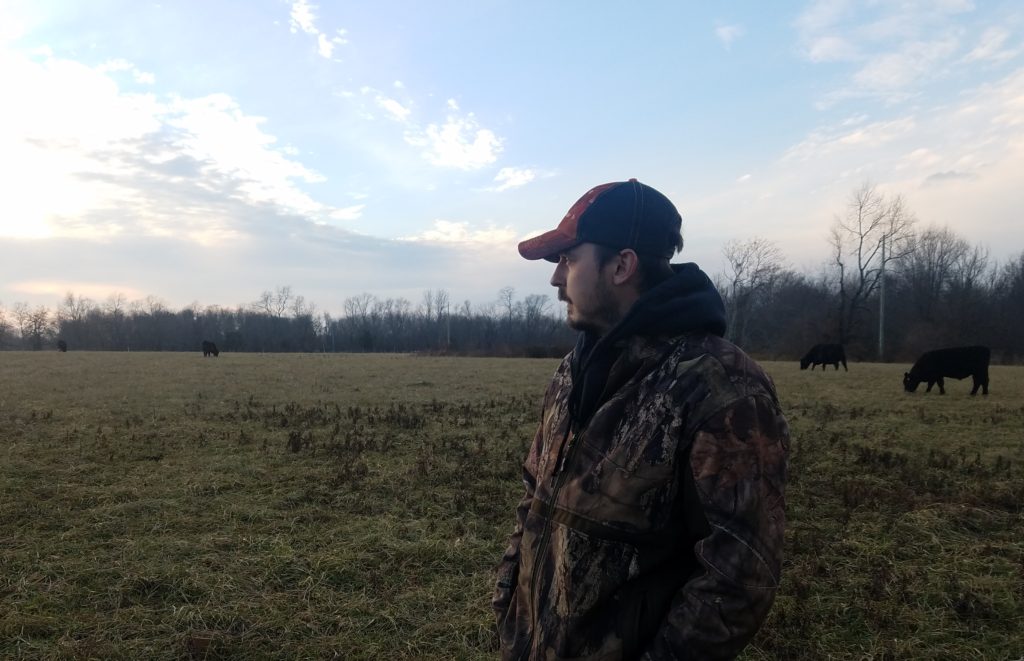
This is the first post in a multi-part blog series analyzing the draft farm bill released on April 12, 2018 by House Agriculture Committee Chairman Mike Conaway (R-TX). Subsequent posts focus on: crop insurance and commodity subsidies, local/regional food systems and rural development, research and seed breeding, conservation, and organic agriculture. The bill is expected to be considered and “marked-up” (aka amended) by the full Agriculture Committee this week and on the House floor in May.
The draft farm bill (“chairman’s mark”) introduced by House Agriculture Committee Chairman Mike Conaway (R-TX) on April 12, 2018, while including some support for beginning and socially disadvantaged farmers, falls far short of making the investments needed to ensure the success of the next generation of American farmers.
The most concerning piece of the bill is the Chairman’s failure to include a majority of the innovative and impactful proposals included in the bipartisan Beginning Farmer and Rancher Opportunity Act (BFROA) co-sponsored by six House Agriculture Committee members and strongly endorsed by the National Sustainable Agriculture Coalition (NSAC).
By failing to incorporate the recommendations of BFROA into the mark, the Chairman fails to take advantage of a rare opportunity to knock down the long-standing barriers to entry for future generations of farmers and ranchers. At a time when the average age of the American farmer is approaching 60 years, and increasingly retiring producers are struggling to find talented and driven future farmers to take over their operations, opening new doors to economic opportunity for beginning farmers is particularly critical.
Below, we include a summary of the key takeaways on how beginning and socially disadvantaged farmers fared in the Chairman’s mark.
Highlights
- Reauthorizes the popular and long-standing Beginning Farmer and Rancher Development Program (BFRDP) and expands the focus of the program to include food safety training, land access, and succession planning.
- Includes a new Farmland Tenure, Transition, and Entry Data Initiative to ensure that policymakers and the public have access to important trend data on farmland ownership, tenure, transition, barriers to entry, profitability and viability of beginning farmers.
- Expands crop insurance benefits to beginning farmers enrolling in Whole-Farm Revenue Protection policies, a new policy championed by NSAC in the last farm bill.
Mixed Bag
- Although the draft bill maintains current mandatory funding levels ($20 million per year) for BFRDP, NSAC is disappointed that the House mark does not increase funding and does not make the program permanent funding. Permanent funding would cement Congress’ commitment to the next generation of farmers and ranchers by ensuring long-term support for new farmer training program in every state.
- Instead of eliminating BFRDP’s matching funds requirement (which prevents many limited resource organizations from even applying for grant funding), the draft bill includes a waiver for organizations who are working with new farmers in underserved areas or populations.
- The bill does not restore funding for the Outreach and Technical Assistance to Socially Disadvantaged and Veteran Farmers (Section 2501) program, but instead simply maintains the current funding level of $10 million per year. The 2501 program’s funding was cut in half in the last farm bill, a bill which simultaneously expanded the program’s service base to also serve military veterans. Needless to say, under these circumstances the program has struggled to provide critical resources to communities in need.
- Reauthorizes and maintains level funding for the Transition Incentives Program (TIP) within the Conservation Reserve Program to help facilitate the transition of farmland to the next generation of farmers. While we are pleased that this critical funding is accounted for, we are disappointed that the draft bill does not make needed policy changes to improve the program’s ability to connect retiring farmers with potential successors.
Lowlights
- Rather than make important changes to the Risk Management Education Partnership Program that would ensure that beginning and socially disadvantaged farmers better understand and utilize risk management tools, the draft bill completely eliminates this successful and popular program.
- Raises loan limits on guaranteed loans to $1.75 million to allow fewer loans to larger farms, reducing the total number of borrowers that can be served and leaving small and mid-sized farms with less access to credit. At the same time, the draft bill makes no changes to Direct Farm Ownership Loans which remain at $300,000, despite the inability of many small and beginning farmers to utilize these loans due to the rising costs of farmland.
- Reauthorizes, but provides no funding for Beginning Farmer and Rancher Individual Development Accounts. This program has been on the books since it was created in the 2008 Farm Bill, but has yet to receive any funding needed to launch its innovative asset building and financial literacy program.
- Fails to include the innovative proposal within BFROA that would make it easier for new farmers to access revenue-based crop insurance policies by allowing these farmers to obtain coverage through the Farm Service Agency’s Non-Insured Crop Disaster Assistance Program (NAP).
- Fails to address longstanding issues with the implementation of the advance payment option within the Environmental Quality Incentives Program (EQIP). This policy, created in the 2008 Farm Bill, allows beginning and socially disadvantaged farmers to obtain up to 50 percent of their total EQIP cost-share payment up front, rather than at the end of their contract. Unfortunately, this policy has struggled with implementation, and as of last year, only 1.2 percent of beginning farmer and 2.5 percent of socially disadvantaged farmer EQIP contracts utilized the advance payment option.
- Fails to include any beginning farmer and farm viability provisions within the Agricultural Land Easement section of the Agricultural Easement Conservation Program.

